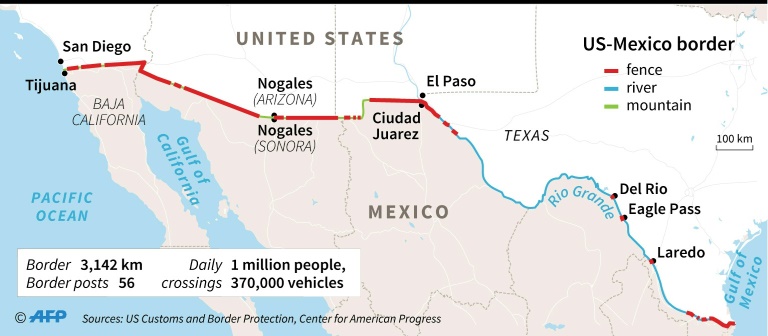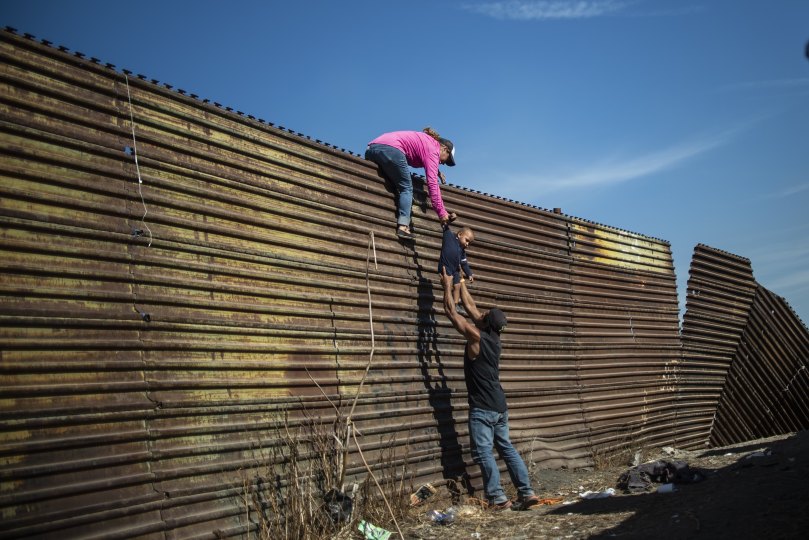Earlier this month, I traveled to Tijuana, Mexico with a group of colleagues from Fort Lewis College to get a better sense of the situation along the United States’ southern border with Mexico.
Our trip coincided with the country’s longest partial government shutdown in history, which lasted 35 days and caused lasting damage to the national economy. President Donald J. Trump, who began the shutdown on December 22 by refusing to sign any legislation that didn’t include $5.7 billion for his border wall, argues that additional fencing is necessary to ward off the “invasion” of migrants attempting to cross into the U.S.
After a brief visit to McAllen, Texas on January 11, President Trump tweeted: “Humanitarian Crisis at our Southern Border. I just got back and it is a far worse situation than almost anyone would understand, an invasion!”
Humanitarian Crisis at our Southern Border. I just got back and it is a far worse situation than almost anyone would understand, an invasion! I have been there numerous times – The Democrats, Cryin’ Chuck and Nancy don’t know how bad and dangerous it is for our ENTIRE COUNTRY….
— Donald J. Trump (@realDonaldTrump) January 11, 2019
…The Steel Barrier, or Wall, should have been built by previous administrations long ago. They never got it done – I will. Without it, our Country cannot be safe. Criminals, Gangs, Human Traffickers, Drugs & so much other big trouble can easily pour in. It can be stopped cold!
— Donald J. Trump (@realDonaldTrump) January 11, 2019
The problem is, it’s not the U.S. that’s being flooded by Mexican migrants, it’s Mexico.
Since 2005, migration from Mexico to the U.S. has averaged a net negative, meaning more Mexicans have returned home during this period than crossed into the United States. For example, between 2009 and 2014 return migrants to Mexico outpaced migration to the U.S. by 140,000 people. In other words, each year, roughly 23,000 more Mexicans return to Mexico than come to the U.S.
Proponents of tougher border security cite decreasing migration rates from Mexico as evidence of a sound investment. However, if investments in border security were driving lower rates of migration from Mexico, than Mexican migration would have begun to fall after the U.S. government started drastically increasing its expenditure on border security. But that’s not the case.
Decreasing Mexican Migration
The rate of Mexican migration to the U.S. began to fall in 2000, and it’s been steadily decreasing ever since. In fact, by 2013, more immigrants were coming to the U.S. from China and India than from Mexico.
So, if increased border security isn’t the cause of lower rates of Mexican migration, what is?
The real reason fewer Mexicans are coming to the U.S. has little to do with increased spending on homeland security. Migration from Mexico has dropped over the last two decades because life in Mexico is improving, and for the first time in recent history, Mexico’s middle class is expanding. And as the Mexican economy has expanded and opportunities have improved, fertility rates have plummeted from nearly 7 children per women in 1960 to just over 2 in 2015.
Population growth in Mexico has stabilized, and the country’s economy has done a better job of meeting the demands of its citizens. As a result, Mexico’s supply of potential migrants has dwindled in recent years.
Ironically, with social conditions improving in Mexico and economic expansion spreading throughout the country, locking down the U.S.-Mexico border may actually slow down the return of Mexicans to their homeland.
Border Wall
Walls are typically designed to keep people out, but in the case of the border wall between the U.S. and Mexico, additional miles of fencing and increased spending on border security is having the opposite effect. According to the Pew Research Center, in 2000, only 35 percent of unauthorized migrants had been in the U.S. for more than 10 years. By 2016, more than 66 percent of unauthorized migrants reported living in the U.S. for at least ten years. And for Mexican nationals – who make up 75 percent of unauthorized immigrants living in the country – more than 80 percent had been in the U.S. for at least a decade.
According to the Pew Research Center, in 2000, only 35 percent of unauthorized migrants had been in the U.S. for more than 10 years. By 2016, more than 66 percent of unauthorized migrants reported living in the U.S. for at least ten years. And for Mexican nationals – who make up 75 percent of unauthorized immigrants living in the country – more than 80 percent had been in the U.S. for at least a decade.
This unexpected outcome is largely related to the rising cost of getting into the U.S. without documentation.
In years past, smugglers – known as polleros or coyotes – would charge between $1,500 and $3,000 to bring migrants into the U.S. from Mexico, but in recent years, the cost has pushed upwards to $8,000 per crossing.
As migrants at Casa del Migrante pointed out to me during my trip to Tijuana, longer stays in the U.S. have helped families overcome the rapid increase in smugglers’ fees and avoid the rising danger of crossing into the U.S. via inhospitable trails that run through the desert. A deported migrant from Michoacán, Mexico told me:
“I used to go back to Mexico at least once a year. I’d come work, then I’d go home. But now it’s too dangerous, so I stay as long as I can.”
The middle-aged man, who asked not to be named, told me that the last time he’d been to Mexico was 1999.
For the United States’ government, longer migrant stays represent a clear unintended consequence of tighter border security, which cost U.S. taxpayers $3.8 billion in 2016.
Ultimately, spending along the border has done little to deter undocumented migration, and has unexpectedly prolonged the stay of unauthorized immigrants currently living in the United States. As inconvenient as these outcomes might be for policymakers in Washington D.C., they are facts, nonetheless.
With this in mind, if the U.S. government is genuinely interested in designing immigration policies that work, they will have to begin by setting aside xenophobic fears and let empirical facts guide the design of their policies.
Disclaimer: The views and opinions expressed here are those of the author and do not necessarily reflect the editorial position of The Globe Post.





















